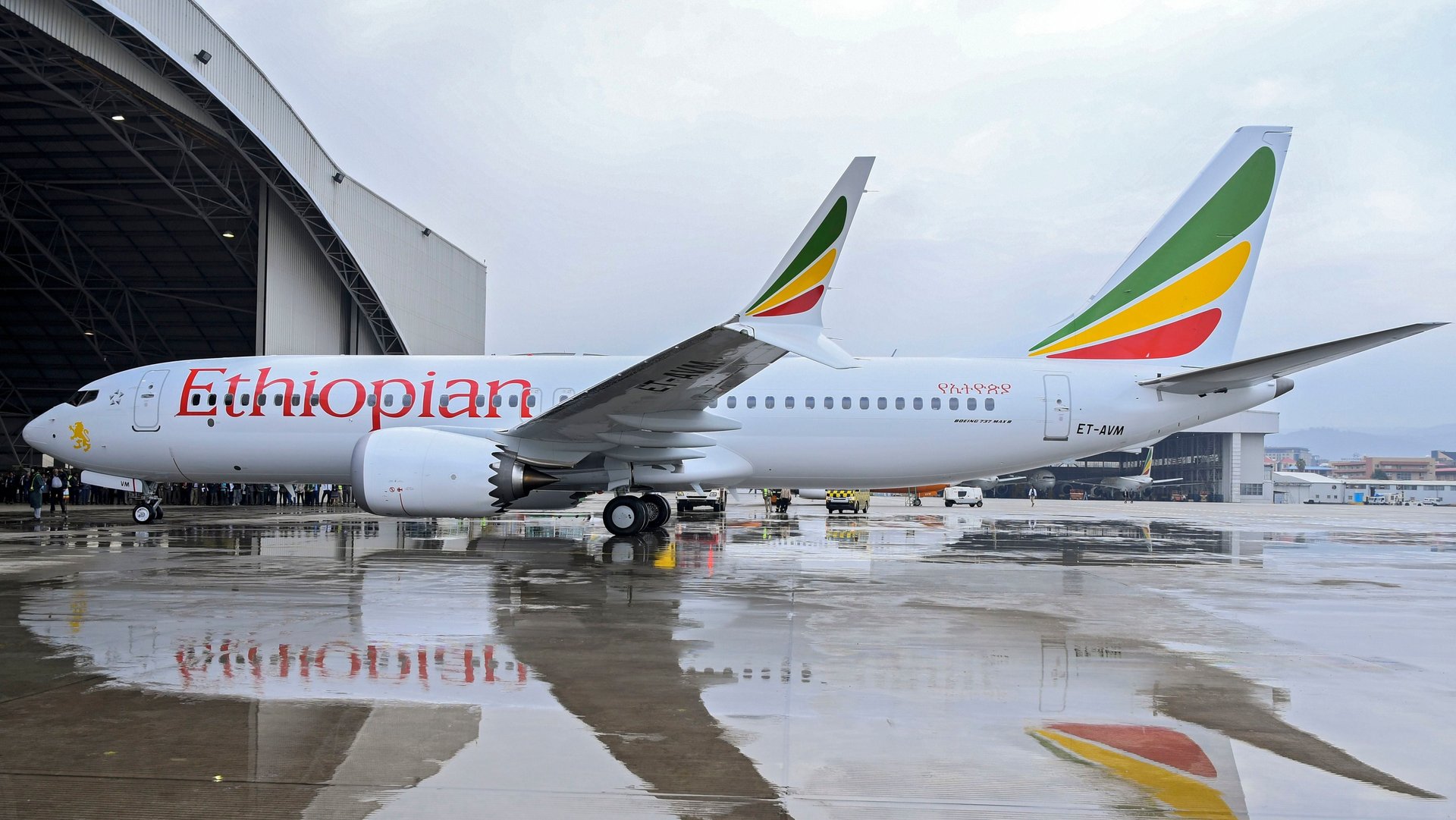Ethiopia says pilots repeatedly followed Boeing’s instructions before crash
The preliminary investigation report on an Ethiopian Airlines flight that crashed a month ago showed that pilots “repeatedly performed all the procedures provided” by Boeing to bypass a new flight system that can destabilize its plane but were not able to control the aircraft.


The preliminary investigation report on an Ethiopian Airlines flight that crashed a month ago showed that pilots “repeatedly performed all the procedures provided” by Boeing to bypass a new flight system that can destabilize its plane but were not able to control the aircraft.
In a press conference in Addis today (Apr. 4), Ethiopian minister of transport Dagmawit Moges said the plane’s take-off “appeared very normal” and the pilots had “obtained the license and qualification to conduct the flight.” She also said the Boeing 737 Max aircraft possessed a valid certificate of airworthiness.
Today’s statement was the first account provided by officials on what actually happened since the Nairobi-bound ET 302 crashed minutes after take-off, killing all 157 people on board, the second deadly crash involving Boeing’s new 737 Max jet. The double crashes along with the queries around the plane’s design have opened up Boeing not just to government scrutiny, and possible financial loss from airlines seeking to cancel orders, but also to a slew of wrongful death lawsuits being filed in US courts.
The Ethiopian accident report adds to concerns about the model, because pilots were aware of the anti-stall system and appear to have done what they were supposed to if it activated erroneously—two major differences from the Lion Air crash in Indonesia that killed 189 people last October.
Responding to queries from reporters regarding the design and inherent safety of the plane, Amdeye Fenta, chief of the Ethopian Accident Information Bureau, added, “Is there a structural design problem? We cannot predict right now.”
More than 300 Boeing 737 Max jets were quickly grounded globally following the Ethiopian crash, with early data leading officials to note the “clear similarities” with the Lion Air crash. US transportation officials have begun probing how the model was certified. The Federal Aviation Administration also said yesterday it was forming an international team to review the safety of the 737 Max and of the anti-stalling software known as the Maneuvering Characteristics Augmentation System, or MCAS, which is under scrutiny in both crashes. When it activates, it sharply pushes the plane’s nose down.
In its response, Ethiopian Airlines said it was very unfortunate that “despite their hard work and full compliance with the emergency procdures” the pilots could not recover the airplane “from the persistence of nose diving.”
On Wednesday (April 4), the Wall Street Journal reported that pilots on the ill-fated flight followed emergency procedures detailed by Boeing after the first crash, but still couldn’t regain control (paywall) of the plane. The pilots had shut off the automated anti-stalling system but switched it back on because they failed to recover control of the plane. Reuters also reported that the feature reactivated and pushed the plane downwards after the pilots initially switched it off.
“Since repeated uncommanded aircraft nose-down conditions are noticed in this preliminary investigation it is recommended that the aircraft flight control system related to the flight controllability shall be reviewed by the manufacturer,” Dagmawit said, as part of safety recommendations in the report.
Boeing says it has developed an MCAS software update to provide additional layers of protection from the system activating due to erroneous data. The update will also limit how powerfully the flight system acts, and was put through hundreds of analysis while its chief executive Dennis Muilenburg joined the test flight yesterday, the company said. It has to be approved by the FAA, however, and it is unclear when it would be deployed by airlines.
As the potential problems with the automated system became better known, the question of whether pilots were well-versed with how to deal with the plane’s MCAS system has also come into focus. Many pilots in the US qualified to fly the earlier version of the 737, on which the Max is based, only received training amounting to “an iPad lesson for an hour,” which did not cover the anti-stall system. One US airline pilot who spoke to Quartz said he told his airline he wasn’t at ease with the training and flying the plane— only to face a reprove.
Reports have questioned if the two pilots on the doomed Ethiopian flight were trained on the simulator. The carrier, without confirming if they did, has said the B-737 MAX full flight simulators were not designed to simulate the MCAS situation faced by Lion Air.
Tripti Lahiri contributed to this story.